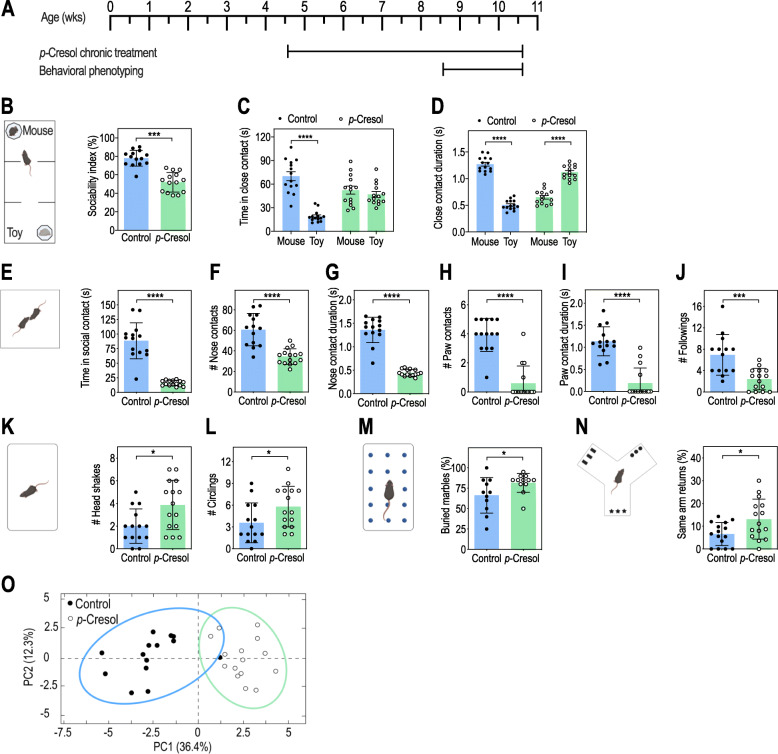Fig. 1.
p-Cresol treatment induces autistic-like behaviors and alters VTA dopamine neurons excitability. A Timeline of the experiments. B–D Three-chamber test (n = 14/group): B Sociability index (ratio of the time spent in close contact with the mouse interactor normalized to the sum of the time in close contact with both mouse interactor and toy mouse); Mann-Whitney U-test: ***p < 0.001. C Time spent in close contact with the mouse interactor or the toy mouse; 2-way ANOVA: p (Treatment) = 0.2601, p (Preference) < 0.0001, p (Treatment × Preference) < 0.0001; Šidák’s post hoc tests for mouse vs. toy preference effect: ****p < 0.0001. D Mean duration of each close contact with the mouse interactor or the toy mouse; 2-way ANOVA: p (Treatment) = 0.9416, p (Preference) < 0.0001, p (Treatment × Preference) < 0.0001; Šidák’s post hoc tests for mouse vs. toy preference effect: ****p < 0.0001. E–J Dyadic social interaction test (n = 14 control, n = 15 p-Cresol): E total time spent in social contact, F number of events and G mean duration of nose contacts, H number of events and I mean duration of paw contacts, J number of following events; Mann-Whitney U-test: ****p < 0.0001, ***p < 0.001. K, L Motor stereotypies (n = 14 control, n = 15 p-Cresol): K number of head shakes and L circling events; Mann-Whitney U-test: *p < 0.05. M Marble burying test (n = 11 control, n = 12 p-Cresol): percentage of buried marbles; Mann-Whitney U-test: *p < 0.05. N Y-maze spontaneous alternations test (n = 15/group): percentage of same-arm returns; Mann-Whitney U-test: *p < 0.05. O PCA plot of behavioral scores recorded in the dyadic social interaction test and direct monitoring of motor stereotypies (E–L and Supplementary Figure 2H-L); ellipses of the 95% confidence intervals are indicated for each group (n = 14 control, n = 15 p-Cresol); PC, principal component. B–N Data are presented as dot-plots featuring means ± SD

